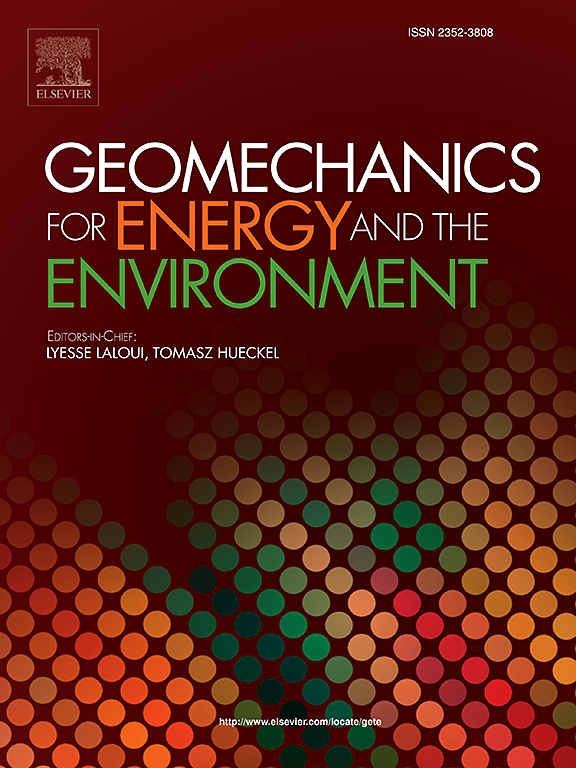Comparison of performance assessment models and methods in crystalline rock: Task F1 DECOVALEX-2023
IF 3.3
2区 工程技术
Q3 ENERGY & FUELS
引用次数: 0
Abstract
Performance Assessment (PA) is important in ensuring the isolation and long-term containment of spent nuclear fuel from the geosphere. It plays a crucial role in evaluating the long-term safety and effectiveness of underground nuclear waste storage, considering factors such as radionuclide release rates, transport mechanisms, and the performance of engineered barriers. This paper presents the findings of DECOVALEX 2023 Task F, which aimed to compare various models and conceptual approaches used in PA of a generic deep geologic repository in crystalline rock. The objective was to explore the contribution of modeling choices to uncertainty in PA model outputs. The study highlights the importance of characterizing the crystalline rock properties and the engineered barrier system in PA. The so-called reference case, a simplified version of a PA focused on the transport of two conservative tracers from the deposition hole to the surface, neglecting waste package performance was used as an example. Seven international teams (Canada, Czech Republic, Germany, Korea, Sweden, Taiwan, and United States) developed and simulated the generic reference case, tracking tracer releases from waste package locations to the near field and ground surface. Quantities of Interest (QOI) such as remaining tracer in the repository and fluxes across the domain were compared. Technical and time constraints led some teams to exclude parts of the engineered barrier system which resulted in faster release of tracers and radionuclides from the repository region. Comparing all models highlighted the importance of explicitly including drifts, buffer, and backfill in the reference case models. The results also emphasize the utility of a diverse set of modeling approaches in building confidence with performance assessment analysis.
结晶岩性能评价模型和方法的比较:任务F1 DECOVALEX-2023
性能评估对于确保将乏核燃料与地圈隔离和长期封存具有重要意义。它在评估地下核废料储存的长期安全性和有效性方面起着至关重要的作用,考虑到放射性核素释放率、运输机制和工程屏障的性能等因素。本文介绍了DECOVALEX 2023任务F的研究结果,该任务旨在比较结晶岩中一般深层地质储库的PA中使用的各种模型和概念方法。目的是探讨建模选择对PA模型输出不确定性的贡献。该研究强调了在PA中表征结晶岩性质和工程屏障系统的重要性。所谓的参考案例是一个简化版的PA,重点关注两种保守示踪剂从沉积孔到表面的传输,而忽略了废物包装的性能。比较了兴趣量(QOI),如存储库中剩余的示踪剂和跨域的通量。由于技术和时间的限制,一些小组排除了工程屏障系统的某些部分,从而使示踪剂和放射性核素更快地从贮存区释放出来。比较所有模型突出了在参考用例模型中显式地包括漂移、缓冲区和回填的重要性。结果还强调了在建立信心与绩效评估分析建模方法的不同集合的效用。
本文章由计算机程序翻译,如有差异,请以英文原文为准。
求助全文
约1分钟内获得全文
求助全文
来源期刊

Geomechanics for Energy and the Environment
Earth and Planetary Sciences-Geotechnical Engineering and Engineering Geology
CiteScore
5.90
自引率
11.80%
发文量
87
期刊介绍:
The aim of the Journal is to publish research results of the highest quality and of lasting importance on the subject of geomechanics, with the focus on applications to geological energy production and storage, and the interaction of soils and rocks with the natural and engineered environment. Special attention is given to concepts and developments of new energy geotechnologies that comprise intrinsic mechanisms protecting the environment against a potential engineering induced damage, hence warranting sustainable usage of energy resources.
The scope of the journal is broad, including fundamental concepts in geomechanics and mechanics of porous media, the experiments and analysis of novel phenomena and applications. Of special interest are issues resulting from coupling of particular physics, chemistry and biology of external forcings, as well as of pore fluid/gas and minerals to the solid mechanics of the medium skeleton and pore fluid mechanics. The multi-scale and inter-scale interactions between the phenomena and the behavior representations are also of particular interest. Contributions to general theoretical approach to these issues, but of potential reference to geomechanics in its context of energy and the environment are also most welcome.
 求助内容:
求助内容: 应助结果提醒方式:
应助结果提醒方式:


